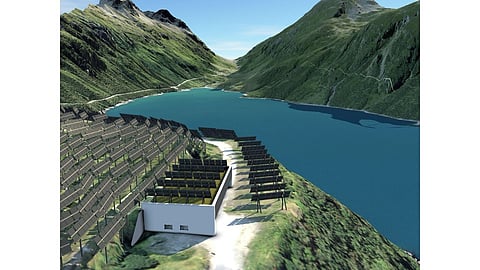

Axpo has announced an 8 MW solar power plant for the Swiss alpine region
The project will be located by the Lai da Nalps reservoir and generate 11 GWh/year
Swiss Federal Railways will procure power from this project for a period of 20 years
Switzerland-based utility Axpo will break ground on yet another alpine solar power plant in its portfolio which will be located 2,000 meters above sea level. This 8 MW project will supply clean electricity to the Swiss Federal Railways over a 20-year period to be used for the latter’s network.
Axpo will build the NalpSolar Plant in the Swiss canton of Graubünden in the municipality of Tujetsch, with the construction work starting in March 2025.
Solar panels will be installed near the Lai da Nalps reservoir to generate approximately 11 GWh of clean energy annually, particularly in the winter months. This capacity is enough to power more than 2,000 households, it said.
Axpo expects this project to provide further insights into alpine solar plants, something it has been working on for quite some time now.
“This project will explore the limits of solar energy in Alpine regions, giving us invaluable insights into the feasibility of large-scale solar projects in mountainous conditions. Our focus is on developing solutions that are both technologically advanced and economically sustainable over the long term,” explained Axpo Deputy CEO and Head of Generation and Distribution Andy Heiz.
In Spring this year, Axpo also plans to begin construction on a 30 MW alpine project, along with a 15 MW system also in the Canton of Graubünden (see Axpo Continues With Solar Offensive In The Alps).
Axpo says this project is part of the Swiss federal government’s Solar Express initiative. Approved by the Swiss Parliament in September 2022, the Solar Express program supports the construction of large-scale alpine PV projects to ensure electricity supply during winter months high above the fog cover. According to Swissgrid, the administration covers up to 60% of the investment costs for such systems if these provide a minimum of 10 GWh annually and are grid-connected by the end of 2025.
